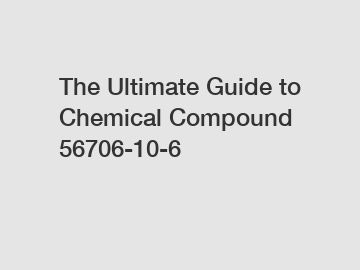Biodegradable plastics have been advertised as one solution to the plastic pollution problem bedeviling the world, but today’s “compostable” plastic bags, utensils and cup lids don’t break down during typical composting and contaminate other recyclable plastics, creating headaches for recyclers. Most compostable plastics, made primarily of the polyester known as polylactic acid, or PLA, end up in landfills and last as long as forever plastics.
You can find more information on our web, so please take a look.
University of California, Berkeley, scientists have now invented a way to make these compostable plastics break down more easily, with just heat and water, within a few weeks, solving a problem that has flummoxed the plastics industry and environmentalists.
“People are now prepared to move into biodegradable polymers for single-use plastics, but if it turns out that it creates more problems than it’s worth, then the policy might revert back,” said
Ting Xu
, UC Berkeley professor of materials science and engineering and of chemistry. “We are basically saying that we are on the right track. We can solve this continuing problem of single-use plastics not being biodegradable.”
Xu is the senior author of a paper describing the process that will appear in this week’s issue of the journal
Nature
.
The new technology should theoretically be applicable to other types of polyester plastics, perhaps allowing the creation of compostable plastic containers, which currently are made of polyethylene, a type of polyolefin that does not degrade. Xu thinks that polyolefin plastics are best turned into higher value products, not compost, and is working on ways to transform recycled polyolefin plastics for reuse.
The new process involves embedding polyester-eating enzymes in the plastic as it’s made. These enzymes are protected by a simple polymer wrapping that prevents the enzyme from untangling and becoming useless. When exposed to heat and water, the enzyme shrugs off its polymer shroud and starts chomping the plastic polymer into its building blocks — in the case of PLA, reducing it to lactic acid, which can feed the soil microbes in compost. The polymer wrapping also degrades.
The process eliminates microplastics, a byproduct of many chemical degradation processes and a pollutant in its own right. Up to 98% of the plastic made using Xu’s technique degrades into small molecules.
One of the study’s co-authors, former UC Berkeley doctoral student
Aaron Hall
, has spun off a company to further develop these biodegradable plastics.
Making plastic self-destruct
Plastics are designed not to break down during normal use, but that also means they don’t break down after they’re discarded. The most durable plastics have an almost crystal-like molecular structure, with polymer fibers aligned so tightly that water can’t penetrate them, let alone microbes that might chew up the polymers, which are organic molecules.
Xu’s idea was to embed nanoscale polymer-eating enzymes directly in a plastic or other material in a way that sequesters and protects them until the right conditions unleash them. In 2018, she showed how this works in practice. She and her UC Berkeley team embedded in a fiber mat an enzyme that degrades toxic organophosphate chemicals, like those in insecticides and chemical warfare agents. When the mat was immersed in the chemical, the embedded enzyme broke down the organophosphate.
Her key innovation was a way to protect the enzyme from falling apart, which proteins typically do outside of their normal environment, such as a living cell. She designed molecules she called random heteropolymers, or RHPs, that wrap around the enzyme and gently hold it together without restricting its natural flexibility. The RHPs are composed of four types of monomer subunits, each with chemical properties designed to interact with chemical groups on the surface of the specific enzyme. They degrade under ultraviolet light and are present at a concentration of less than 1% of the weight of the plastic — low enough not to be a problem.
For the research reported in the
Nature
paper, Xu and her team used a similar technique, enshrouding the enzyme in RHPs and embedding billions of these nanoparticles throughout plastic resin beads that are the starting point for all plastic manufacturing. She compares this process to embedding pigments in plastic to color them. The researchers showed that the RHP-shrouded enzymes did not change the character of the plastic, which could be melted and extruded into fibers like normal polyester plastic at temperatures around 170 degrees Celsius, or 338 degrees Fahrenheit.
To trigger degradation, it was necessary only to add water and a little heat. At room temperature, 80% of the modified PLA fibers degraded entirely within about one week. Degradation was faster at higher temperatures. Under industrial composting conditions, the modified PLA degraded within six days at 50 degrees Celsius (122 F). Another polyester plastic, PCL (polycaprolactone), degraded in two days under industrial composting conditions at 40 degrees Celsius (104 F). For PLA, she embedded an enzyme called proteinase K that chews PLA up into molecules of lactic acid; for PCL, she used lipase. Both are inexpensive and readily available enzymes.
“If you have the enzyme only on the surface of the plastic, it would just etch down very slowly,” Xu said. “You want it distributed nanoscopically everywhere so that, essentially, each of them just needs to eat away their polymer neighbors, and then the whole material disintegrates.”
Composting
The quick degradation works well with municipal composting, which typically takes 60 to 90 days to turn food and plant waste into usable compost. Industrial composting at high temperatures takes less time, but the modified polyesters also break down faster at these temperatures.
Xu suspects that higher temperatures make the enshrouded enzyme move around more, allowing it to more quickly find the end of a polymer chain and chew it up and then move on to the next chain. The RHP-wrapped enzymes also tend to bind near the ends of polymer chains, keeping the enzymes near their targets.
The modified polyesters do not degrade at lower temperatures or during brief periods of dampness, she said. A polyester shirt made with this process would withstand sweat and washing at moderate temperatures, for example. Soaking in water for three months at room temperature did not cause the plastic to degrade.
Soaking in lukewarm water does lead to degradation, as she and her team demonstrated.
“It turns out that composting is not enough — people want to compost in their home without getting their hands dirty, they want to compost in water,” she said. “So, that is what we tried to see. We used warm tap water. Just warm it up to the right temperature, then put it in, and we see in a few days it disappears.”
Xu is developing RHP-wrapped enzymes that can degrade other types of polyester plastic, but she also is modifying the RHPs so that the degradation can be programmed to stop at a specified point and not completely destroy the material. This might be useful if the plastic were to be remelted and turned into new plastic.
The project is in part supported by the Department of Defense’s Army Research Office, an element of the U.S. Army Combat Capabilities Development Command’s Army Research Laboratory.
“These results provide a foundation for the rational design of polymeric materials that could degrade over relatively short timescales, which could provide significant advantages for Army logistics related to waste management,” said Stephanie McElhinny, Ph.D., program manager with the Army Research Office. “More broadly, these results provide insight into strategies for the incorporation of active biomolecules into solid-state materials, which could have implications for a variety of future Army capabilities, including sensing, decontamination and self-healing materials.”
Xu said that programmed degradation could be the key to recycling many objects. Imagine, she said, using biodegradable glue to assemble computer circuits or even entire phones or electronics, then, when you’re done with them, dissolving the glue so that the devices fall apart and all the pieces can be reused.
“It is good for millennials to think about this and start a conversation that will change the way we interface with Earth,” Xu said. “Look at all the wasted stuff we throw away: clothing, shoes, electronics like cellphones and computers. We are taking things from the earth at a faster rate than we can return them. Don’t go back to Earth to mine for these materials, but mine whatever you have, and then convert it to something else.”
Co-authors of the paper include Christopher DelRe, Yufeng Jiang, Philjun Kang, Junpyo Kwon, Aaron Hall, Ivan Jayapurna, Zhiyuan Ruan, Le Ma, Kyle Zolkin, Tim Li and Robert Ritchie of UC Berkeley; Corinne Scown of Berkeley Lab; and Thomas Russell of the University of Massachusetts in Amherst. The work was funded primarily by the U.S. Department of Energy (DE-AC02-05-CH11231), with assistance from the Army Research Office and UC Berkeley’s Bakar Fellowship program.
RELATED INFORMATION
Overview of Biodegradable Plastic Pellets Manufacturing Business
Suchandra Mukherjee 29 Jun, 2023
Biodegradable Plastic Pellets include plastics that can be broken down by living organisms, typically microbes, into water, carbon dioxide, and biomass. These plastics are often made using renewable raw materials, microorganisms, petrochemicals, or a combination. Biodegradable plastics are designed to degrade more quickly than regular plastics because they contain additives that attract microbes to aid in their decomposition. Bioplastic materials are derived from renewable sources like vegetable fats and oils, corn starch, straw, woodchips, sawdust, and recycled food waste. By offering environmentally friendly alternatives to conventional plastics, biodegradable plastic pellet manufacturing businesses can differentiate themselves and gain a competitive advantage. This allows them to command higher product prices, resulting in increased profitability.
Uses of Biodegradable Plastic Pellets
There are two kinds of bio-based polyesters involved in the Biodegradable Plastic Pellets Manufacturing Business:
- polylactide acid (PLA)
- polyhydroxyalkanoate (PHA)
The uses of Biodegradable Plastic Pellets in Biodegradable Plastic Pellets Manufacturing Business are as follows:
- Biodegradable plastics contribute to the reduction of carbon dioxide levels.
- Naturally occurring bacteria break down biodegradable plastics, resulting in decreased greenhouse gas emissions.
- Biodegradable plastics do not release other hazardous substances when they decompose.
- The manufacturing process of biodegradable plastics consumes less energy.
- Biodegradable plastics help reduce the amount of waste generated.
- Biodegradable plastics redirect petroleum consumption to other purposes.
- Biodegradable plastics can be combined with traditional products.
- The manufacturing cycle of biodegradable plastics requires less energy.
- Biodegradable plastics have the potential to create new export industries.
- Biodegradable plastics provide a new marketing platform.
- Under specific circumstances, biodegradable plastics can decompose rapidly.
Factors for the Growth of the Bioplastics Market in India
The global bioplastics market is experiencing significant growth, and several factors contribute to this growth. They include:
- Mandates and regulations: Government policies and regulations drive the adoption of bioplastics, promoting their use and setting targets for sustainable materials.
- Increasing eco-awareness among consumers: Consumers are becoming more conscious of the environmental impact of plastic waste and are actively seeking sustainable alternatives, including bioplastics.
- Corporate focus on sustainability: Companies are recognizing sustainability’s importance and integrating it into their business strategies. This shift in corporate mindset is driving the demand for bioplastics.
- Technology stabilization: Advancements in technology have led to the stabilization of bioplastic manufacturing processes, making them more viable and commercially feasible.
- Cost reduction: As bioplastic production processes improve and economies of scale are achieved, the cost of bioplastics is decreasing, making them more competitive with traditional plastics.
The global market is transitioning towards a low-carbon and circular economy, supported by policy measures and increased consumer awareness of sustainable products and packaging. This creates significant growth opportunities for biodegradable plastics manufacturers in the coming years. The demand for biodegradable plastics is rising in packaging, agriculture, and textiles.
Additional resources:How to Save Money When Buying does resin biodegrade
What are the types of cell culture consumables ?Frequently Asked Questions about PP FibersThe 6 best spray adhesive for automotiveExploring the Versatile Properties of Hydroxyethyl CelluloseWhat is the best caulk for undermount sink?Unlocking the Versatile Uses of Styrene Acrylic EmulsionHuaWei are exported all over the world and different industries with quality first. Our belief is to provide our customers with more and better high value-added products. Let's create a better future together.
With growing concerns about the environmental impact of plastics, there is a rising demand for Biodegradable Plastic Pellets Manufacturing Business. Biopolymers and bioplastics are considered viable and scalable alternatives to many plastics. They offer exciting opportunities in various sectors, including packaging, water, beverages, insulation materials, speciality materials, and more.
How to start a Biodegradable Plastic Pellets Manufacturing Business
Biodegradable plastic is an excellent alternative to conventional plastics, which are inexpensive and easy to produce but difficult to decompose. Consequently, biodegradable plastic products are being widely used as a replacement for harmful plastic products. These products are made from biodegradable plastics derived from biopolymers extracted from decomposed plants and animals.
Manufacturing Process: Generally, biodegradable plastics are manufactured using plant-based polymers, mainly starch. Alternatively, they can be made from a biopolymer called Chitin, extracted from insect skins, shellfish shells, and fungal cell walls. Once a sufficient quantity of these renewable raw materials is collected, they are processed and moulded to form biodegradable plastic products. Pro-oxidant additives are also incorporated into these plastics to facilitate quick decomposition, leaving natural and non-toxic end products behind.
Biodegradable pellets are produced using corn kernels. These kernels are collected and processed in a mill to extract dextrose from the starch. The dextrose is then converted into lactic acid or lactate through fermentation. The lactate is further polymerized to form long-chain polylactic molecules. Hydrophobic agents and emulsifiers are added to the polylactate, and the mixture is blended at a specific temperature, resulting in an extrudate that is transformed into pellets.
Process, approvals and Licenses required for Biodegradable Plastic Pellets Manufacturing Business
To obtain a CPCB (Central Pollution Control Board)[1] certificate for bioplastic manufacturers, a standard operating process (SOP) is followed. The SOP applies to all applications and involves several steps:
- Filing of Application: Manufacturers of bioplastics submit a registration application (Form A) along with the necessary documents, which should be digitally signed. The application is sent to the CPCB via email. Upon receiving the application, the CPCB assigns an application number and sends a conformity mail to the applicant. Additionally, an undertaking to register bioplastic carry bags on duly notarized stamp paper is required.
- Processing of Application: The CPCB examines the application and communicates any queries to the applicant within seven working days. The applicant must respond to the queries within thirty days. Respond within the given timeframe to avoid rejection of the application. The certificate is generated if the CPCB does not respond within one month.
- Issuing of Certificate: According to the Plastic Waste Management Rules, 2016, the CPCB must issue the certificate within seven working days from the submission of the application. A copy of the certificate is sent to the respective State Pollution Control Board or Pollution Control Committee. In certain cases, a provisional certificate may be issued initially, and a final certificate is granted after submitting a complete test report or other specified conditions.
- Cancellation of Certificate: The CPCB may cancel or suspend the certificate if the manufacturer fails to comply with the conditions. If any violations are found during checking or verification, a notice is issued, providing the manufacturer with an opportunity to respond within fifteen days. The final decision on cancellation or suspension lies with the chairman of the CPCB.
Licences required
- Business Registration
- GST registration
- Pollution NOC from SPCB
- Extended Producer Responsibility (EPR) registration
- MSME registration
- Registration with the State Pollution Control Board
- Manufacturing Certificate issued by the Central Pollution Control Board (CPCB)
- Factory’s Licence
- Fire NOC
Documents Required
The documents required to obtain a CPCB license in Biodegradable Plastic Pellets Manufacturing Business are as follows:
- Production details, including compostable plastics manufacturing capacity, end products, and byproducts.
- Manufacturing process flow diagram
- Test report of biodegradability from CPCB certified Lab
- Documents showing raw material procurement and product sale
- Details of pollution control measures
- Undertaking letter
Market Overview of Biodegradable Plastic Pellets Manufacturing Business
The global market for Biodegradable Plastic Pellets Manufacturing Business was valued at over $4 billion in 2017 and is projected to reach $15.6 billion by the end of 2027, exhibiting a strong compound annual growth rate (CAGR) of 14.4% during the period from 2017 to 2027. This growth is primarily attributed to the rising costs of petroleum-based resins and increasing initiatives favouring renewable resources. Among the different types of bioplastics, polyester-based and polylactic acid resins are expected to experience the fastest growth, while starch-based varieties will remain the largest segment.
India’s biodegradable plastic pellets and products market is also witnessing significant growth in response to the increasing environmental consciousness among Indian consumers. The Indian biodegradable plastic market is actively adopting new technologies, leading to the expansion of manufacturing biodegradable plastics and products. It is projected that biodegradable plastics will capture 60% of the plastic industry in India.
Conclusion
Manufacturing biodegradable plastic pellets presents a promising business opportunity in today’s environmentally conscious market. Biodegradable plastics offer a sustainable alternative to conventional plastics, addressing pollution and plastic waste accumulation concerns. By utilizing renewable raw materials and employing advanced manufacturing processes, biodegradable plastic pellets can be produced with reduced environmental impact. Setting up a biodegradable plastic pellets manufacturing business requires careful planning and adherence to relevant regulations and standards. Obtaining certifications from authorities like the CPCB can enhance credibility and market reach. It is recommended to take expert advice to set up Biodegradable Plastic Pellets Manufacturing Business to comply with the necessary regulations and obtain the specific licenses applicable to your business.
FAQ
Is the biodegradable plastic business profitable? Due to the adverse effects of plastic waste biodegradable plastic bag business has become one of the most profitable manufacturing businesses in the present and the upcoming time.
Does biodegradable plastic cost more? Biodegradable Plastic costs 20 – 50% more thantraditional plastic.
How much is the biodegradable plastic market worth? The Global Biodegradable Plastic market worth in 2021 was USD 4.345 Billion and will reach USD 12.915 Billion by 2030, at a CAGR of 13.1%.
How much does a bioplastic manufacturing plant cost? For starting, approximately 60 lakhs rupees is required in a biodegradable plastic bag manufacturing business on a small scale.
Does biodegradable plastic cost more? Yes, it costs 20 – 50% more to produce bioplastic than to produce traditional plastic.
How are biodegradable plastic granules manufactured? Biodegradable plastics are formed by fermenting sugar/canola oil to produce Polylactic acid (PLA) or Polyhydroxyalkanoates (PHA), converted into biodegradable plastics.
What are the raw materials for biodegradable plastic? Corn, Cassava, Potato, and Sugarcane are the raw materials for biodegradable plastic.
How biodegradable granules are made? Biodegradable plastic granules are made from the starch found in corn kernels, which is then broken down into sugars.
How biodegradable plastic bags are made? Biodegradable plastic bags can be made from a normal plastic polymer or polypropylene by incorporating an additive which causes degradation and then biodegradation of the polymer due to oxidation.
How do you manufacture biodegradable plastic? Biodegradable plastics are formed from the fermentation of sugar or canola oil to produce Polylactic acid (PLA) or Polyhydroxyalkanoates (PHA), which are converted into biodegradable plastics.
Read our Article: How To Start A Biodegradable Plastic Bag Business?
Spread the love
For more information, please visit biodegradable plastic film manufacturer.












Comments
All Comments ( 0 )